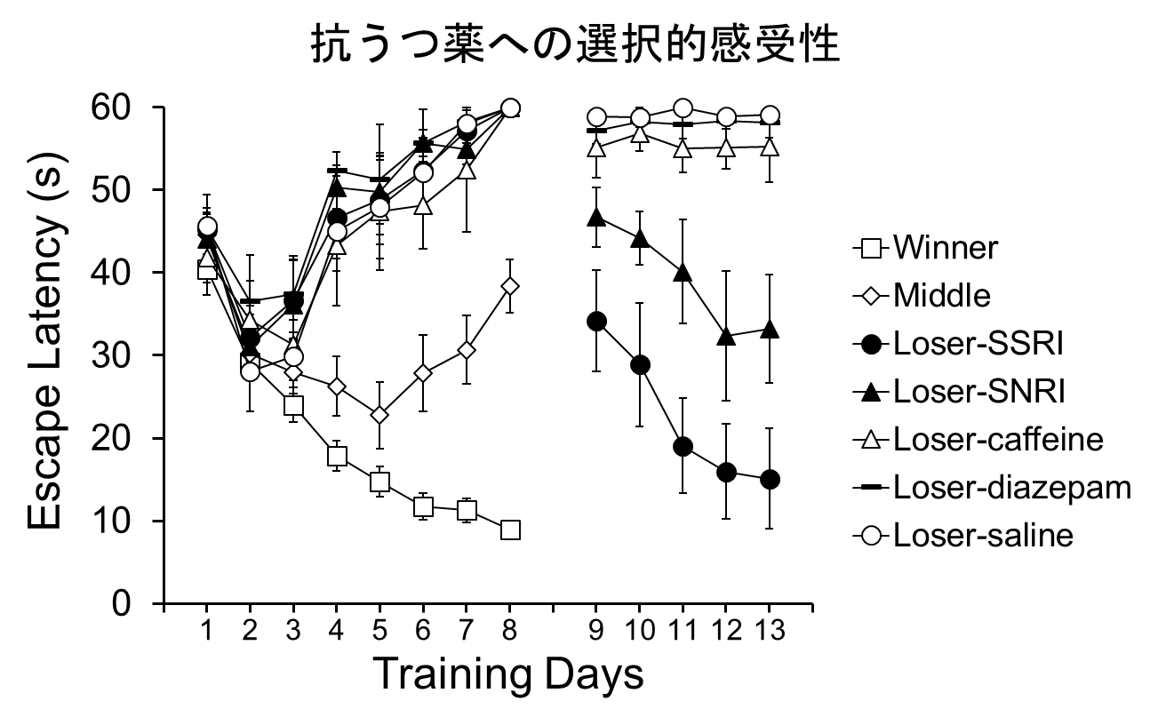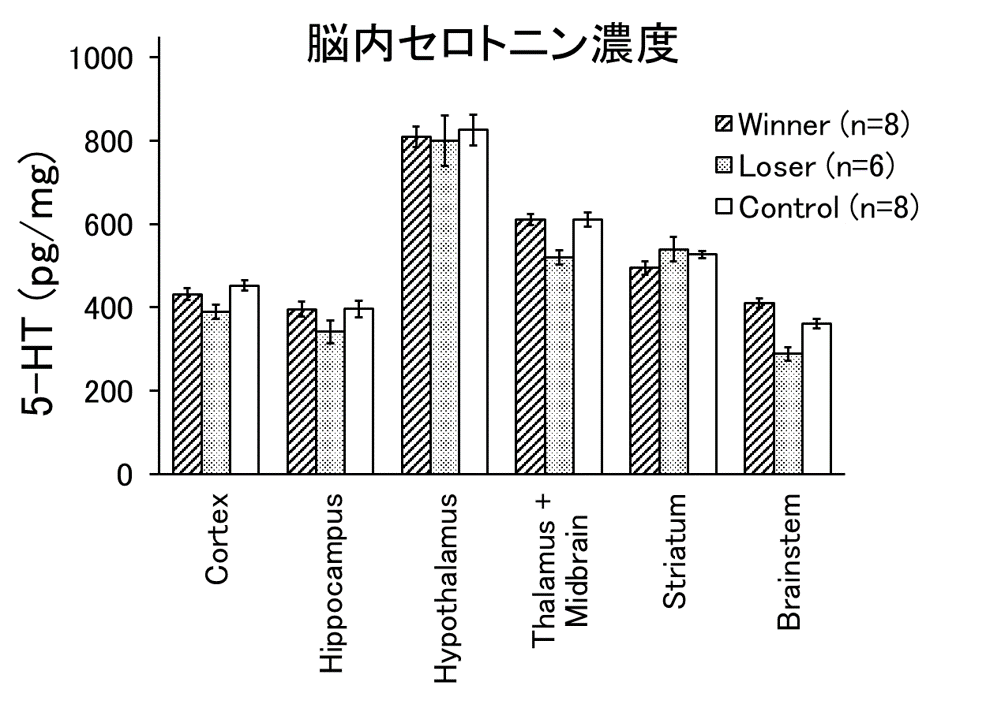An animal model in which genetic and environmental interactions induce depression
Information updated: July 31, 2023
- Seeds Information
- Researcher Information
- What do you expect from collaboration with companies?
- Contact for this research
Seeds Information
keyword
Depression, psychiatric disorders, animal models, mice, genetic-environmental interactions, epigenetics, behavioral experiments, behavioral science
Field
Central
Overview
When C57BL/6N mice were given a difficult water maze learning task, many subjects acquired an adaptive coping behavior, namely, rapid escape to the platform, and maintained their health, whereas some subjects gradually abandoned learning the adaptive coping behavior and fell into a state of behavioral despair that closely resembled human depression.
Further analysis of these behaviorally despairing individuals revealed the following high suitability as an animal model of depression:
1) Face validity
Abandoning solving manageable problems and adaptive learning
・Decreased spontaneous activity etc.
2) Construct validity
-Changes in the concentration of monoamines (serotonin, etc.) in several areas of the brain
・Suppression of hippocampal neurogenesis, etc.
3) Predictive validity
Behavioral hopelessness was selectively improved by antidepressants (tricyclics, SSRIs, SNRIs)
④Other
Behavioral despair is induced by the interaction of genetic and environmental factors
What's new?
In this experimental system, the occurrence rate of individuals showing a depressive state depends on the strain of the subject and the difficulty of the task. In other words, this experimental system is suitable for investigating the underlying mechanism of depression, which is assumed to develop as a result of the interaction between genetic and environmental factors. In addition, it has many characteristics that are consistent with various hypotheses regarding the etiology of depression, including the monoamine hypothesis.
What are its advantages over other studies?
Although we use genetically highly homologous inbred mice, we can obtain both depressed and healthy individuals in parallel. Therefore, by using healthy individuals as a comparison control, we can perform more precise analysis of depressed individuals.
What problem does it help solve?
- Efficacy evaluation of compounds and natural ingredients with potential antidepressant effects
- Behavioral evaluation of model mice (genetically modified mice, etc.) in which factors thought to be related to depression have been manipulated
Possibility of other applications and developments
- Searching for genes involved in the onset of depression and antidepressant effects
- Epigenetic mechanisms involved in the onset of depression and antidepressant effects
- Proposing a new hypothesis on the etiology of depression beyond the monoamine hypothesis
Related Patents
Method for producing depression model mice (Patent No. 4619823)
Related papers
Researcher Information
| full name | Nobutaka Doe |
|---|---|
| Affiliation | School of Rehabilitation Department of Occupational Therapy General Education |
| Specialization | Central |
| Collaborative Researcher | Hideyuki Yamamoto and Kyosuke Yamanishi |
| Related links | ― |
What do you expect from collaboration with companies?
We would like to collaborate on general research (excluding behavioral experiments) using Molecular Biology biological techniques to analyze the phenotype of individuals exhibiting depressive states and to explore the factors that determine the appearance of such individuals (especially the GxE portion).
Contact for this research
兵庫医科大学 大学事務部 研究推進課
E-mail: chizai@hyo-med.ac.jp
Tel: 0798-45-6488

 Research Seeds Collection
Research Seeds Collection

